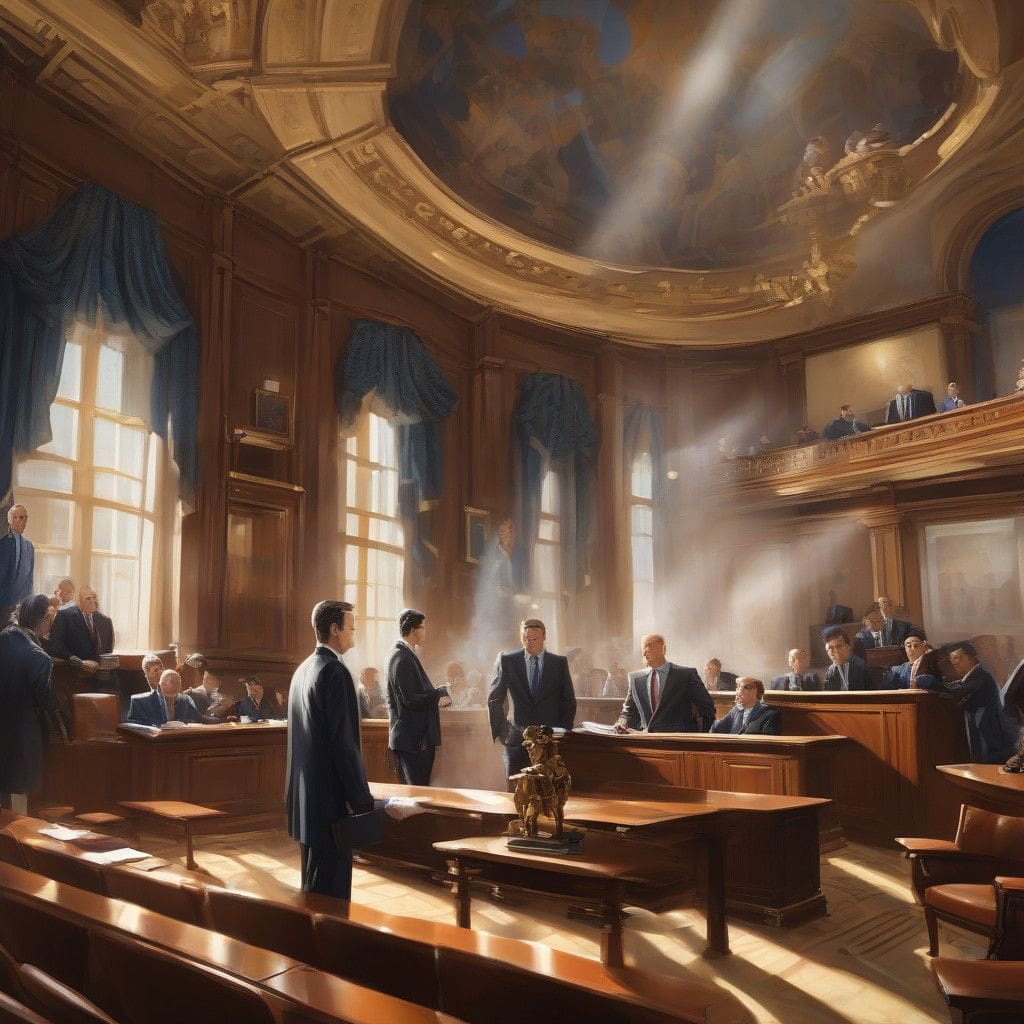The ongoing tensions between the luxury fashion world and regulatory bodies have come to the forefront with the recent court trial involving Tapestry, the parent company of Coach, and the Federal Trade Commission (FTC). The trial commenced just hours before Coach’s spring/summer 2025 runway show in New York, where the brand showcased an array of vibrant leather goods to a captivated audience. Meanwhile, in a nearby courtroom, Tapestry aimed to defend its ambitious $8 billion acquisition of Capri Holdings, the owner of Michael Kors, against the FTC’s antitrust concerns.
This juxtaposition of fashion’s glitz and legal scrutiny illustrates the complexities of consolidation in the luxury sector. The FTC argues that merging with Capri could pose a risk to competition in the accessible luxury handbag market, potentially leading to higher prices for consumers. With a combined market cap of approximately $13 billion, the merger represents an opportunity for American brands to challenge the dominance of European giants like LVMH and Kering.
The courtroom strategies of Tapestry and the FTC reveal differing perspectives on what constitutes “accessible luxury.” The FTC defines this market as encompassing items priced between $100 and $1,000, serving the middle-class consumer seeking stylish yet affordable options. Tapestry counters that the luxury landscape is more varied and competitive than the FTC suggests, with numerous direct-to-consumer brands presenting alternatives that meet diverse price points.
Lawrence Buterman, Tapestry’s legal counsel, argued that handbag shoppers do not exclusively seek “accessible luxury” products. They often navigate a spectrum of choices, from high-end designer pieces to lower-priced alternatives from emerging brands like Telfar and Cuyana. If Tapestry were to set higher prices post-merger, consumers would likely shift their spending to these competing brands, undermining the premise of reduced competition.
In this legal environment, the FTC’s challenge to the merger has broader implications. If the court sides with the FTC, it could discourage future consolidation efforts among American fashion brands looking to grow their market share against established European conglomerates. Susan Scafidi, an expert from the Fashion Law Institute, emphasized the potential stifling effect on the U.S. fashion industry, arguing that such a ruling would hinder its development and growth potential.
Despite the looming legal battles, Coach is forging a new identity among younger consumers. Its recent runway show on the High Line revealed a clear strategy shift, with designs aimed at attracting Gen-Z shoppers. The models paraded in outfits combining oversized jackets, sleek shoulder bags, and whimsical elements, suggesting a playful yet modern take on luxury fashion. This transformation stems from a conscious effort to move away from a previous emphasis on discounting, as evidenced by Coach’s recent 3% sales increase, reflecting a robust revenue of $5 billion in the past fiscal year.
The trial’s outcome remains uncertain, but Tapestry’s repositioning of Coach as a vibrant, youthful brand is indicative of the potential for growth—not just for Tapestry, but for the luxury market in the U.S. as a whole. A favorable decision could pave the way for innovative collaborations and partnerships that would strengthen American fashion’s competitive stance globally.
With the fashion industry’s landscape continuously shifting, it will be intriguing to observe the interplay between luxury branding and regulatory factors. The case of Tapestry versus the FTC isn’t just about one merger—it resonates with the broader narrative of how fashion adapts to changing economic climates and consumer preferences.
As the closing arguments approach on September 30, all eyes will be on the courtroom, waiting to see if the merging of these powerful brands materializes or if it will be derailed by regulatory concerns.












